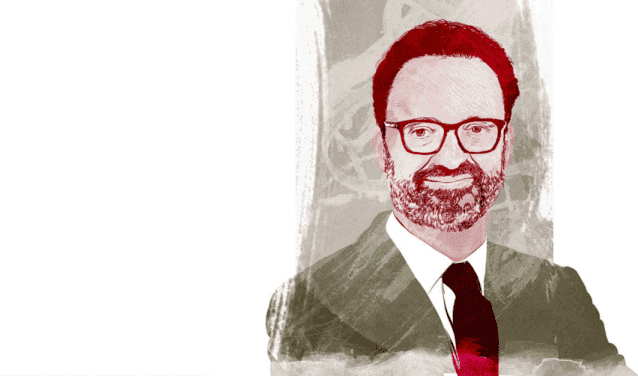Home>"The ultimate auction experience is the thrill of the saleroom"

25.12.2015
"The ultimate auction experience is the thrill of the saleroom"
How can that old-time auction fever be preserved in the digital age? Édouard Boccon-Gibod, Sciences Po alumnus and recently appointed managing director of Christie’s France, gives his take on the changing face of the art market.
His atypical profile contrasts sharply with the traditional codes of an auction house. Édouard Boccon-Gibod, managing director of Christie’s France since last December, is a pure product of the French audiovisual landscape, as the former chairman of Publications Métro France and TF1 Production.
What with online auctions, new departments such as handbags and accessories, and the galloping expansion of contemporary art, the prestigious house founded in 1766 has a number of challenges to face.
- What surprised you the most when you arrived at Christie’s?
When you come from a sector as regulated as broadcasting, what first strikes you is the feeling of immense freedom that comes from the free movement of artworks, information, and sales around the world, with two dominant players waging a Homeric battle on every front. The second thing is the weight of contemporary art in the market. Lastly, I was also struck by the youth, motivation and commitment of the staff.
- With information so accessible nowadays, how does an auction house manage to stay relevant?
Fortunately, the transmission of knowledge falls outside the scope of Google algorithms! In chess, the battle was over the minute Kasparov lost against “Deep Blue”, but in our business, expertise is essential. Intuition, the ability to analyse a work both as a whole and in detail, the teachings of the masters, a perfect knowledge of this or that school or art movement, will always require a human mind with its doubts and certainties, and where the real added value lies.
- Has the dialogue with collectors nevertheless evolved?
Yes, of course. The biggest change is that, thanks to platforms like Artnet and Artprice, customers are now scrupulously well-informed of the value of transactions. That said, an auction is still an exceptional moment when the market is in action before your very eyes. It remains a unique experience. We can auction works worth 50 euros, 50,000 euros, or 5,000,000 euros, but it’s still the same passion, the same commitment and the same pleasure of the encounter between supply and demand.
- How is digital technology changing this experience?
Today you can bid online – on your phone, if you like – with the Christie’s application. And if the amount does not exceed 30,000 euros, you don’t even need to register for the sale in advance. This is a radical change, since we now have an open saleroom without necessarily being able to gauge interest in the sale beforehand. As well as having on eye on the saleroom and one on the phone, the auctioneer needs a third for the online bids on the screen in front of him. And when the Internet connection is disrupted or fails, we stop the sale.
- Will the share of digital sales continue to grow?
Currently about 16 percent of sales are made online. One of the indicators that we follow particularly closely is the average value of the lots in online-only auctions, and this is continuing to grow.
A Richard Serra sold for $900,000 in a digital sale, jewellery for €120,000, some Picasso ceramics for €50,000. Having said that, above a certain price or a certain form, it is essential for the collector to have physical contact with the work. The ultimate auction experience is still the thrill you feel in the saleroom!
Sophie Colin
Article published in the autumn issue of Emile and produced by Pluris (FR), the online culture magazine.